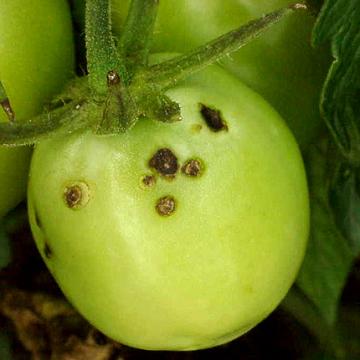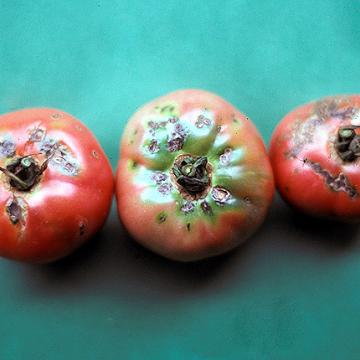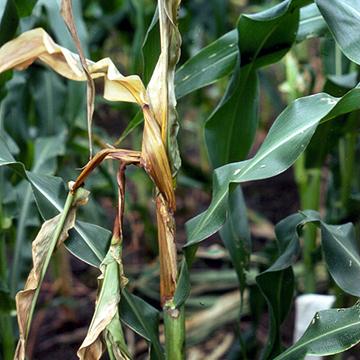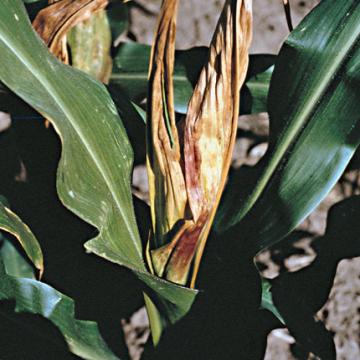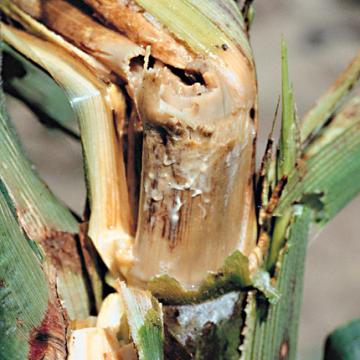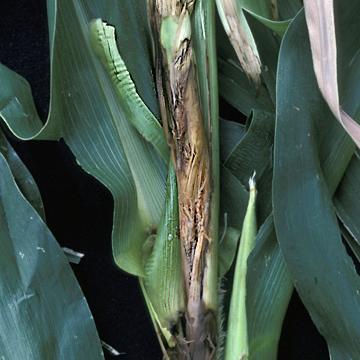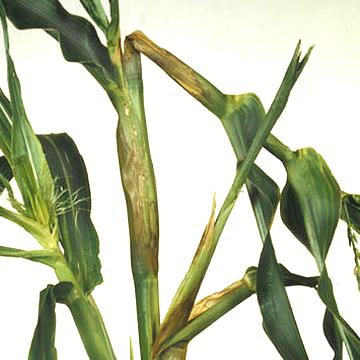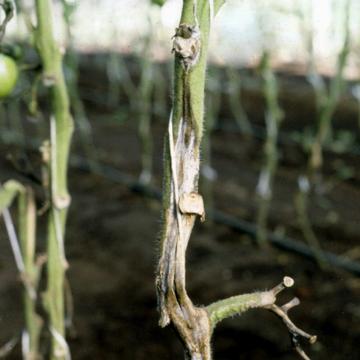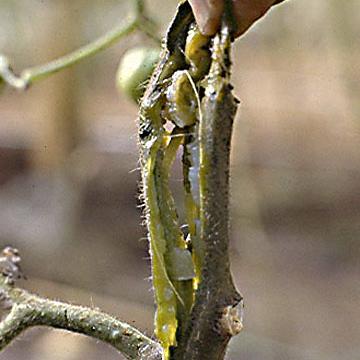DISEASE: Bacterial spot
HOST: Tomato
Green fruit with dark brown lesions. The bacterial spot xanthomonads are Xanthomonas euvesicatoria, X. vesicatoria, X. perforans, and X. gardneri. X. perforans is not known to infect fruit.
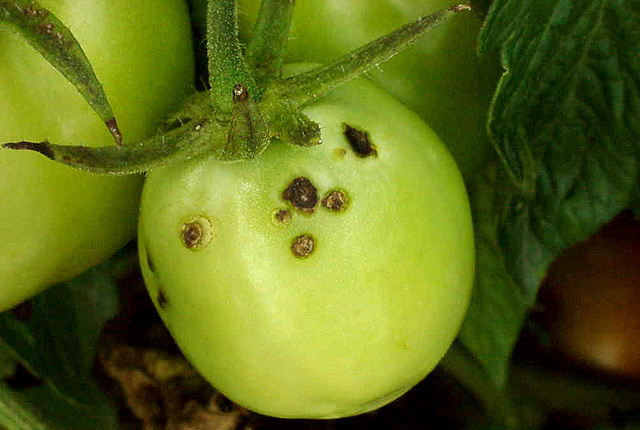
Bacterial spot | Tomato
DISEASE: Bacterial spot
HOST: Tomato (Lycopersicon esculentum)
PATHOGEN: Xanthomonas bacterial spot pathogens
PATHOGEN SYNONYM: Xanthomonas axonopodis pv. vesicatoria
SOURCE: S. Miller
DISEASE: Bacterial spot
HOST: Tomato
Ripe fruit with dark brown spots. The bacterial spot xanthomonads are Xanthomonas euvesicatoria, X. vesicatoria, X. perforans, and X. gardneri. X. perforans is not known to infect fruit.
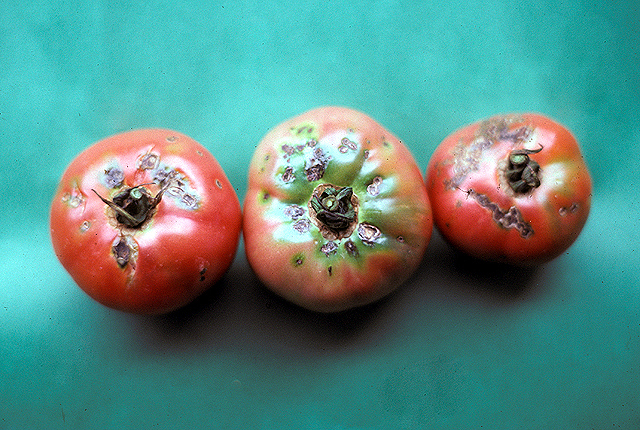
Bacterial spot | Tomato
DISEASE: Bacterial spot
HOST: Tomato (Lycopersicon esculentum)
PATHOGEN: Xanthomonas bacterial spot pathogens
PATHOGEN SYNONYM: Xanthomonas axonopodis pv. vesicatoria
SOURCE: M. Goto
DISEASE: Bacterial stalk and top rot
HOST: Corn (Maize)
Corn at intermediate stage of disease development.
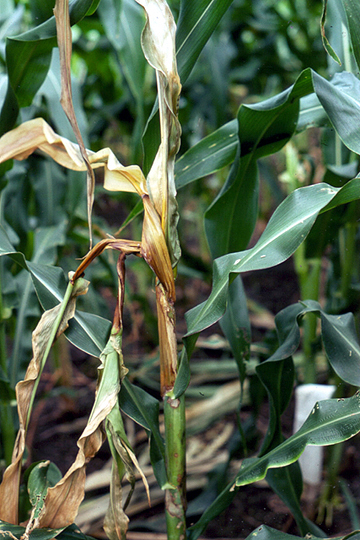
Bacterial stalk and top rot | Corn (Maize)
DISEASE: Bacterial stalk and top rot
HOST: Corn (Maize) (Zea mays)
PATHOGEN: Dickeya zeae
PATHOGEN SYNONYM: Erwinia chrysanthemi pv. zeae
SOURCE: A. Alvarez
DISEASE: Bacterial stalk and top rot
HOST: Corn (Maize)
Plant with decay of growing point and stalk. Other bacterial species also cause stalk rot, including Pectobacterium carotovorum.
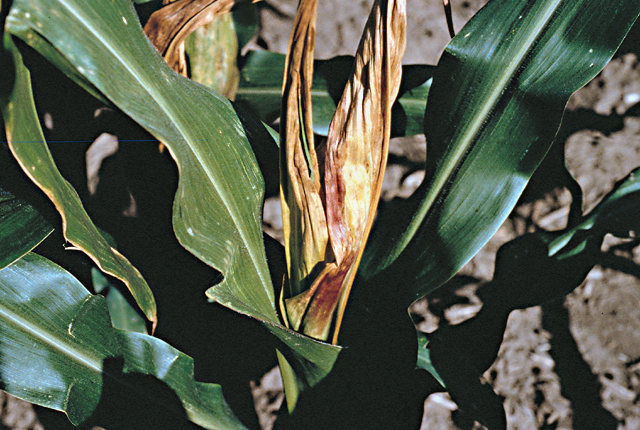
Bacterial stalk and top rot | Corn (Maize)
DISEASE: Bacterial stalk and top rot
HOST: Corn (Maize) (Zea mays)
PATHOGEN: Dickeya zeae
PATHOGEN SYNONYM: Erwinia chrysanthemi pv. zeae
SOURCE: APS
DISEASE: Bacterial stalk and top rot
HOST: Corn (Maize)
Corn with tan, water-soaked, slimy stalk tissue.
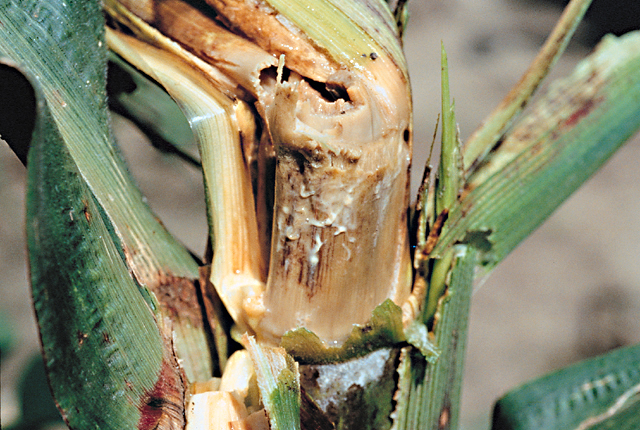
Bacterial stalk and top rot | Corn (Maize)
DISEASE: Bacterial stalk and top rot
HOST: Corn (Maize) (Zea mays)
PATHOGEN: Dickeya zeae
PATHOGEN SYNONYM: Erwinia chrysanthemi pv. zeae
SOURCE: D. White
DISEASE: Bacterial stalk and top rot
HOST: Corn (Maize)
The disease typically occurs midseason and causes tan to dark brown, water-soaked, rotted tissues at base of whorl. Uppermost leaves may wilt.
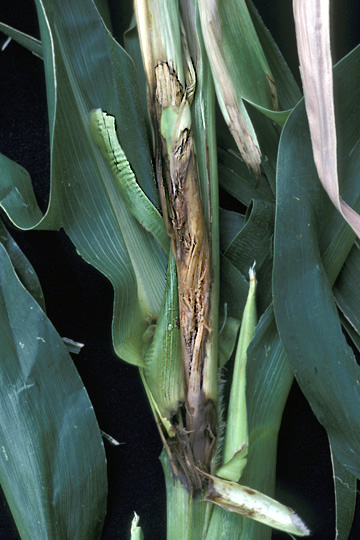
Bacterial stalk and top rot | Corn (Maize)
DISEASE: Bacterial stalk and top rot
HOST: Corn (Maize) (Zea mays)
PATHOGEN: Dickeya zeae
PATHOGEN SYNONYM: Erwinia chrysanthemi pv. zeae
SOURCE: S. Mohan
DISEASE: Bacterial stalk and top rot
HOST: Corn (Maize)
Corn exhibiting symptoms at early stage of disease. Note water-soaked external stalk tissues.
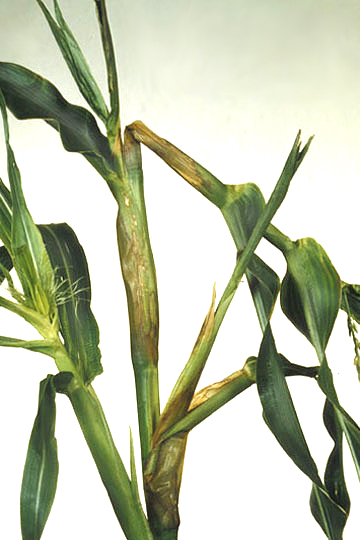
Bacterial stalk and top rot | Corn (Maize)
DISEASE: Bacterial stalk and top rot
HOST: Corn (Maize) (Zea mays 'Pukekohe')
PATHOGEN: Dickeya zeae
PATHOGEN SYNONYM: Erwinia chrysanthemi pv. zeae
SOURCE: J. Young
DISEASE: Bacterial stem rot
HOST: Tomato
Stem with long necrotic lesions. The pathogen often enters plants following pruning injuries.
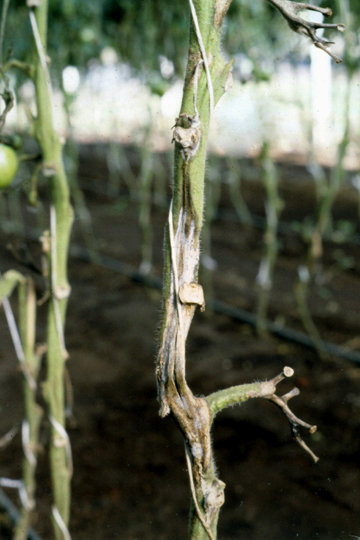
Bacterial stem rot | Tomato
DISEASE: Bacterial stem rot
HOST: Tomato (Lycopersicon esculentum)
PATHOGEN: Pectobacterium atrosepticum
PATHOGEN SYNONYM: Ewinia carotovora subsp. atroseptica
SOURCE: A. Alvarez
DISEASE: Bacterial stem rot
HOST: Tomato
Wilt is first symptom of disease. Later, the pith usually disintegrates, causing hollow and blackened stems.
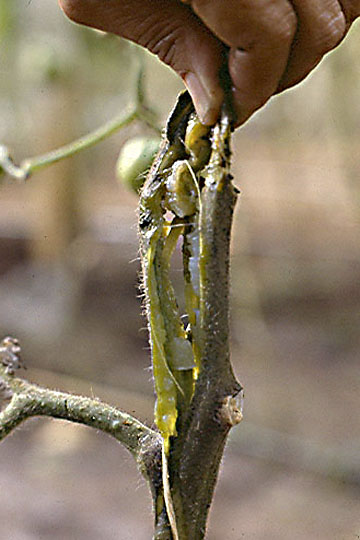
Bacterial stem rot | Tomato
DISEASE: Bacterial stem rot
HOST: Tomato (Lycopersicon esculentum)
PATHOGEN: Pectobacterium atrosepticum
PATHOGEN SYNONYM: Erwinia carotovora subsp. atroseptica
SOURCE: M. Stanghelllini


